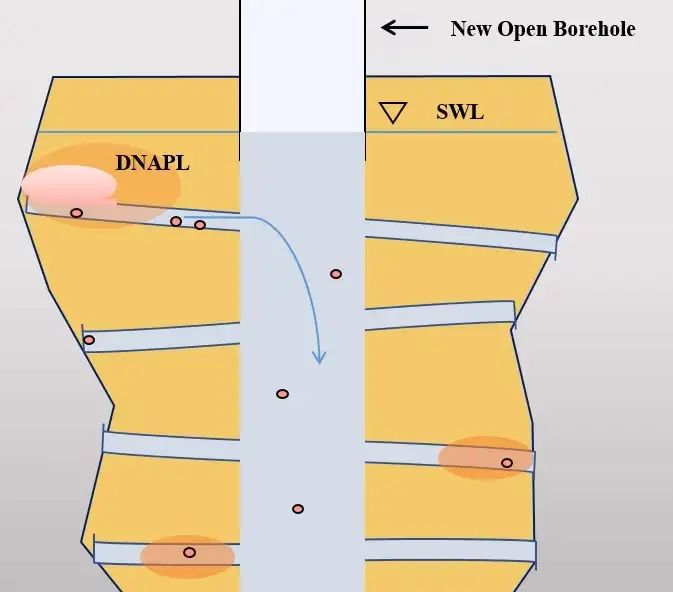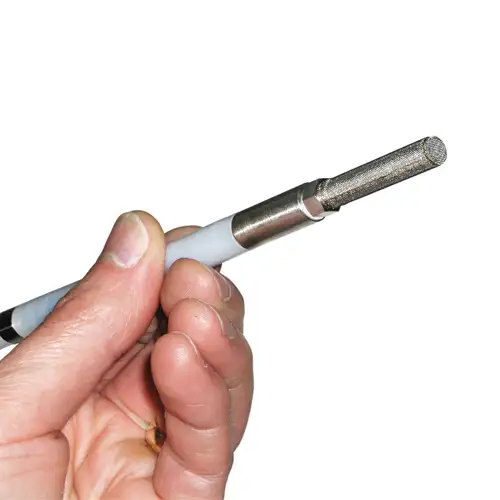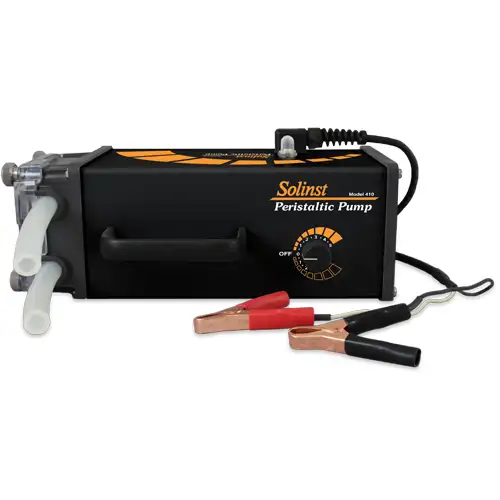
Model 405 Solinst Flute Blank Liners
Water Quality Probes
Solinst Eureka, a global leader in the design and manufacture of multiparameter water quality sondes.
Solinst Field Services
Safeguard your project’s success and mitigate any potential for downtime or additional costs.

Sealing a Borehole with Solinst Flute Blank Liners
How Solinst Flute Liners Seal a Borehole
During the installation process (a process known as eversion), a small everted segment of the liner is placed within the well casing. Water is then added to the interior of the liner to create an annular pocket. The addition of water in the liner to a level above the head of the water in the formation created a driving pressure between the liner’s internal pressure and the pressure beneath the liner. The pressure differential is maintained by the addition of water in the liner and thus, the liner continues to propagate down the borehole (Figure 1).
The driving pressure needed to evert the liner down the borehole mainly depends on the head of the formation. For high head or artesian conditions, differential pressure can be achieved by the addition of higher density muds to the interior of the liner.
As the liner everts, the liner displaces the borehole water into the formation and seals off fractures (Animation).

Figure 1 Blank Liner Installation
Why seal a borehole with a Flute Liner?
Sealing a borehole after drilling prevents cross contamination. With traditional practice, the borehole is either left open for extended periods of time or as with packer testing, large portions of the borehole are left unsealed. During this time, contamination from one fracture can mobilize vertically within the borehole, adhere to the borehole pore space and flow into other fractures. The following diagrams show how cross connection occurs:

Figure 2. DNAPL Confined to an Isolated Fracture

Figure 3. DNAPL spread to other fractures as a result of the newly drilled borehole acting as a flow path between otherwise unconnected fractures.
Additional Reasons to Install Blank Liners:
- The liner seals the entire hole where it can be sealed as compared to multiple packers in boreholes. This is especially useful in karst formations. A packer must be placed in an aquitard to be fully effective.
- The flow in the formation is not perturbed by flow in the open hole. Therefore, measurements of various kinds, such as temperature distribution due to flow in the formation, are more realistic of the natural hydrologic state.
- Removal of the blank liner can enhance the borehole development as described in the paper Open Hole Well Development Problems.
- Stabilizing boreholes. The borehole is not likely to collapse on geophysical sondes which can “see” through the thin liner such as sonic tele-viewer, radiation logs, induction coupled electric logs, radar, etc. can traverse the borehole without concern about collapse of the borehole on the instrument.
- Liners are shipped on a small reel with no need of heavy equipment for the liner installation such as a drill rig or crane truck. The blank liner is easily installed by simply adding water to the interior of the liner.
- Liners are now used to tow instruments through the protected interior of the liner as the liner is being emplaced.
- Blank liners can be equipped with many special features for custom applications such as cure-in place liners, transparent liners, heaters on the tether, fiber optic sensors, insulation of various kinds as well as special fill materials like weighted mud, deionized water, sand, freezing fluids to stabilize the hole, etc.
- Liners can prevent the loss of annular sealing grouts outside a casing emplaced in karst formations – a common problem with oil and gas casings.
- Liners can seal shallow portions of municipal wells preventing contaminants entering the well. An interior casing in place of the tether allows the pump emplacement to greater depths. A grout fill of the liner makes it a permanent seal.
- Salt water intrusion in the formation can be sensed with a deionized water fill of the liner and can be done without the hole perturbing the salt water front.
Related Products
Enhanced Bioremediation
The Waterloo Emitter™is a simple, low cost device designed for the bioremediation of contaminated groundwater. It enables oxygen or other amendments to diffuse through silicone or LDPE tubing in a controlled, uniform manner. Ideal for aerobic bioremediation of MTBE and BTEX, with minimal maintenance required.
3/8" Diameter Flexible Pneumatic Pump
The Micro Double Valve Pump has a remarkably small and flexible design. At 3/8" (10 mm) diameter it is small enough to sample groundwater from channels of a CMT System.
Rugged Peristaltic Pump
Compact, lightweight, and water-resistant, the Solinst Peristaltic Pump is designed for field use. One easy-access control allows various speeds and reversible flow. Ideal for shallow water and vapor sampling.
Tag Line - Rugged, Simple, Convenient
The Tag Line uses a weight attached to laser marked cable, mounted on a sturdy reel. Convenient for measuring depths during monitoring well construction.




